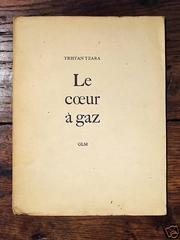
The Museo Nacional Centro de Arte Reina Sofía is Spain's national museum of 20th-century art. The museum was officially inaugurated on September 10, 1992, and is named for Queen Sofía. It is located in Madrid, near the Atocha train and metro stations, at the southern end of the so-called Golden Triangle of Art.

Robert Delaunay was a French artist of the School of Paris movement; who, with his wife Sonia Delaunay and others, co-founded the Orphism art movement, noted for its use of strong colours and geometric shapes. His later works were more abstract. His key influence related to bold use of colour and a clear love of experimentation with both depth and tone.

Orphism or Orphic Cubism, a term coined by the French poet Guillaume Apollinaire in 1912, was an offshoot of Cubism that focused on pure abstraction and bright colors, influenced by Fauvism, the theoretical writings of Paul Signac, Charles Henry and the dye chemist Michel Eugène Chevreul. This movement, perceived as key in the transition from Cubism to Abstract art, was pioneered by František Kupka, Robert Delaunay and Sonia Delaunay, who relaunched the use of color during the monochromatic phase of Cubism. The meaning of the term Orphism was elusive when it first appeared and remains to some extent vague.

Sonia Delaunay was a French artist born to Jewish parents, who spent most of her working life in Paris. She was born in the Russian Empire, now Ukraine, and was formally trained in Russia and Germany, before moving to France and expanding her practice to include textile, fashion, and set design. She was part of the School of Paris and co-founded the Orphism art movement, noted for its use of strong colours and geometric shapes, with her husband Robert Delaunay and others. She was the first living female artist to have a retrospective exhibition at the Louvre in 1964, and in 1975 was named an officer of the French Legion of Honor.

Julio González i Pellicer, born in Barcelona, was a Spanish sculptor and painter who developed the expressive use of iron as a medium for modern sculpture. He was from a lineage of metalsmith workers and artists. His grandfather was a goldsmith worker and his father, Concordio González, a metalsmith worker who taught him the techniques of metalsmith in his childhood years. His mother, Pilar Pellicer Fenés, came from a long line of artists.
Manolo Millares was a Spanish painter.

Beatriz Milhazes is a Brazilian artist. She is known for her work juxtaposing Brazilian cultural imagery and references to western Modernist painting. Milhazes is a Brazilian-born collage artist and painter known for her large-scale works and vibrant colors. She has been called "Brazil's most successful contemporary painter."
José Antonio Sistiaga Mosso was a Spanish Basque artist and experimental filmmaker best known for his feature-length hand-painted "direct" film, Era erera baleibu izik subua aruaren (1968–70). He lived and worked in the Basque Country, between Ciboure and San Sebastian.

The Gas Heart or The Gas-Operated Heart is a French-language play by Romanian-born author Tristan Tzara. It was written as a series of non sequiturs and a parody of classical drama—it has three acts despite being short enough to qualify as a one-act play. A part-musical performance that features ballet numbers, it is one of the most recognizable plays inspired by the anti-establishment trend known as Dadaism. The Gas Heart was first staged in Paris, as part of the 1921 "Dada Salon" at the Galerie Montaigne.
The works of Tristan Tzara include poems, plays and essays. A number of his works contain artwork by well-known artists of the time, including Pablo Picasso and Henri Matisse.
Eusebio Sempere Juan was a Spanish sculptor, painter, and graphic artist whose abstract geometric works make him the most representative artist of the Kinetic art movement in Spain and one of Spain's foremost artists. His use of repetition of line and mastery of color to manipulate the way light plays on the surface give depth to his pictorial compositions.
Lili Dujourie is a Flemish visual artist who works primarily in sculptures, paintings, and video. She has had numerous solo and group exhibitions since 1968 and continues to make art today.
Head of a Young Woman is a 1906 oil painting by Pablo Picasso. It depicts the portrait of a young woman with long, dark hair. The painting dates from Picasso's Rose Period, during a trip that he made to the Catalan village of Gósol. It was owned by Jaime Botín, a billionaire Spanish banker, until it was seized by the Spanish state in 2015. It is now housed at the Museo Nacional Centro de Arte Reina Sofía in Madrid.

Marisa González is a Spanish multimedia artist. She is considered a pioneer in Spain for the use of the new technologies in contemporary art. She works in distinct disciplines like photography, installations, video-art or net-art. She has been Vice President of the association Mujeres en las Artes Visuales MAV, from 2010 until 2016.
José García Guerrero, better known as José Guerrero, was a Spanish artist, notable for his abstract expressionist paintings, who spent much of his working life in U.S.A.
Still Life is a mural executed by Rufino Tamayo in 1954. It is on permanent display at the Museo Soumaya.Fundación Carlos Slim in Plaza Carso, Mexico City, Mexico.
Étienne Sved (1914-1996) was Hungarian-born French-naturalised photographer and poster artist.
Serge Charchoune or Sergey Sharshun was a Russian painter and the first Russian Dada poet. Born August 4, 1888, in Buguruslan, Russia, Charchoune lived most of his life in France where he died in Villeneuve-Saint-Georges on November 24, 1975.
Alberto Corazón Climent was a Spanish multidisciplinary artist who combined graphic design, sculpture, painting, and photography into his works. Some of his works are housed at contemporary museums including Bilbao Fine Arts Museum, Museum of Contemporary Art, Madrid, and Institut Valencià d'Art Modern. He worked as a graphic designer for clients including the organizations National Library of Spain, Autonomous University of Madrid, Anaya, ONCE, Círculo de Bellas Artes, and Renfe Operadora. He was inducted as the member of the Real Academia de Bellas Artes de San Fernando in 2006.








